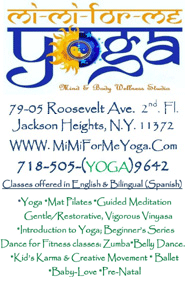|
|
|
|
|
|
Alberta is one of Canada's prairie provinces. It became a province on September 1, 1905.
Alberta is located in western Canada, bounded by the provinces of British Columbia to the west and Saskatchewan to the east, Northwest Territories to the north, and by the U.S. state of Montana to the south. Alberta is one of three provinces and territories (the others being New Brunswick and Yukon) to border only a single U.S. state. It is also one of two provinces that are land-locked (the other being Saskatchewan).
The capital city of Alberta is Edmonton, located just south of the centre of the province. Roughly 300 km south of the capital is Calgary, Alberta's largest city and a major distribution and transportation hub as well as one of Canada's major commerce centers. Edmonton is the primary supply and service hub for Canada's oil sands and other northern resource industries. According to recent population estimates, these two metropolitan areas have now both exceeded 1 million people.Other municipalities in the province include Red Deer, Lethbridge, Medicine Hat, Fort McMurray, Grande Prairie, Camrose, Lloydminster, Wetaskiwin, Banff, Cold Lake, and Jasper.
Since December 14, 2006, the Premier of the province is Hon. Ed Stelmach, Progressive Conservative.
Alberta is named after Princess Louise Caroline Alberta (1848–1939), the fourth daughter of Queen Victoria and her husband, Prince Albert. Princess Louise was the wife of the Marquess of Lorne, Governor General of Canada from 1878 to 1883. Lake Louise, the village of Caroline, and Mount Alberta were also named in honour of Princess Louise.
Alberta is in western Canada and covers an area of 661,190 km² (255,287 mi²). To the south, it borders the U.S. state of Montana on the 49th Parallel. To the east at a longitude of 110° west, it borders the province of Saskatchewan. At 60° north, it is bordered by the Northwest Territories. To the west, its border with British Columbia follows the line of peaks of the Rocky Mountains range along the Continental Divide, which runs northwesterly until it reaches 120° west, at which point the border follows this meridian to 60° north.
With the exception of the southeastern section, the province is well watered. Alberta contains dozens of rivers and lakes used for swimming, water skiing, fishing and a full range of other water sports. There are three large lakes and a multitude of smaller lakes less than 260 km² each. Part of Lake Athabasca lies in the province of Saskatchewan. Lake Claire lies just west of Lake Athabasca in Wood Buffalo National Park. Lesser Slave Lake is northwest of Edmonton.
Alberta has enjoyed a relatively high rate of growth in recent years, mainly because of its burgeoning economy. Between 2003 and 2004, the province had high birthrates (on par with some larger provinces such as British Columbia), relatively high immigration, and a high rate of interprovincial migration when compared to other provinces.[6] Approximately 81% of the population live in urban areas and only about 19% live in rural areas. The Calgary-Edmonton Corridor is the most urbanized area in the province and is one of the most densely populated areas of Canada. Many of Alberta's cities and towns have also experienced very high rates of growth in recent history. Over the past century, Alberta's population rose from 73,022 in 1901 to 2,974,807 in 2001 and 3,290,350 according to the 2006 census.
Alberta has been a tourist destination from the early days of the twentieth century, with attractions including outdoor locales for skiing, hiking and camping, shopping locales such as West Edmonton Mall,Calgary Stampede, outdoor festivals, professional athletic events, international sporting competitions such as the Commonwealth Games and Olympic Games, as well as more eclectic attractions. There are also natural attractions like Elk Island National Park, Wood Buffalo National Park, and the Columbia Icefield.
According to Alberta Economic Development, Edmonton and Calgary both host over four million visitors annually. Banff, Jasper and the Rocky Mountains are visited by about three million people per year.
Lake Louise in the Canadian RockiesAlberta's Rocky Mountains include well known tourist destinations Banff National Park and Jasper National Park. The two mountain parks are connected by the scenic Icefields Parkway. Banff is located 128 km west of Calgary on Highway 1, and Jasper is located 366 km west of Edmonton on Yellowhead Highway. Five of Canada's fourteen UNESCO World heritage sites are located within the province: Canadian Rocky Mountain Parks, Waterton-Glacier International Peace Park, Wood Buffalo National Park, Dinosaur Provincial Park and Head-Smashed-In Buffalo Jump.
About 1.2 million people pass through the gates of Calgary's world-famous Stampede, a celebration of Canada's own Wild West and the cattle ranching industry. About 800,000 people enjoy Edmonton's Capital Ex (formerly Klondike Days).[27] Edmonton was the gateway to the only all-Canadian route to the Yukon gold fields, and the only route which did not require gold-seekers to travel the exhausting and dangerous Chilkoot Pass.
Another tourist destination that draws more than 650,000 visitors each year is the Drumheller Valley, located northeast of Calgary. Drumheller, "Dinosaur Capital of The World", offers the Royal Tyrrell Museum of Palaeontology. Drumheller also had a rich mining history being one of Western Canada's largest coal producers during the war years. The Canadian Badlands has much to offer in the way of attractions, cultural events, celebrations, accommodations and service.
Located in east-central Alberta is Alberta Prairie Railway Excursions, a popular tourist attraction operated out of Stettler. It boasts one of the few operable steam trains in the world, offering trips through the rolling prairie scenery. Alberta Prairie Railway Excursions caters to tens of thousands of visitors every year.
Alberta is an important destination for tourists who love to ski and hike; Alberta boasts several world-class ski resorts such as Sunshine Village, Lake Louise, Marmot Basin, Norquay and Nakiska. Hunters and fishermen from around the world are able to take home impressive trophies and tall tales from their experiences in Alberta's wilderness.
|
|
|




|
|
|
|
|